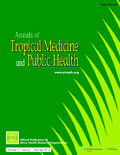| dc.description.abstract | Annual Mass Drug Administration (MDA) to at least 65 – 80% of the population at risk is necessary for Lymphatic Filariasis (LF) elimination. In Kenya, MDA based on diethylcarbamazine and albendazole, using the community-directed treatment (ComDT) approach has been implemented thrice in the Kwale and Malindi districts. To identify the socioeconomic factors influencing compliance with MDA, a retrospective cross-sectional study was conducted in the two districts after the 2008 MDA. Materials and Methods: In Kwale, the Tsimba location was selected for high and Gadini for low coverage, while in Malindi, the Goshi location represented high and Gongoni, low coverage. Using systematic sampling, nine villages were selected from the four locations. Quantitative data was collected from 965 systematically selected household heads and analyzed using SPSS v. 15. For qualitative data, which was analyzed manually according to core themes of the study, 80 opinion leaders and 80 LF patients with clinical signs were purposively selected and interviewed, and 16 focus group discussions (FGDs) conducted with adult and youth male and female groups. Christians were slightly
more (49.1%) in the high compliance areas compared to Muslims (34.3%), while Muslims prevailed (40.6%) in the low compliance areas compared to Christians (29%). On the income level, 27% from the low compared to 12.2% from the high compliance areas had a main occupation, indicative of a higher income, and 95% from the low compared to 78% from high compliance areas owned land, also an indicator of higher economic status. Accurate knowledge of the cause of swollen limbs was higher (37%) in the high compared to 25.8% in the low compliance areas, and so was accurate knowledge about the cause of swollen genitals (26.8% in high compared to 14% in low). Risk perception was higher in the high compliance areas (52% compared to 45%) and access to MDA information seemed to have been better in the high compared to low compliance areas. Patients from the high compliance areas had a higher mean number of years with chronic disease (15.2 compared to 9.7). There is a need for more investment in reaching out to groups that are often missed during MDAs. Different strategies have to be devised to reach those in specific religious groupings and those in casual employment. This could include prolonging the duration of MDA to capture those who are out during the week seeking for casual and other forms of employment. | en_US |

